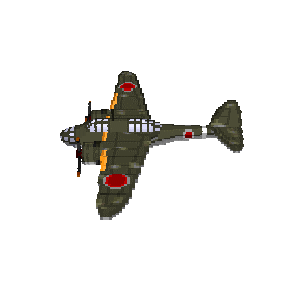Difference between revisions of "Kawasaki Ki-48 Sokei"
| Line 18: | Line 18: | ||
|title=History | |title=History | ||
|content= | |content= | ||
| + | |||
| + | The development of the aircraft began at the end of 1937 at the request of the Japanese military high command. It was inspired by the Soviet Tupolev SB. | ||
| + | |||
| + | Kawasaki had the advantage of the experience of designing the Ki-45 twin-engined heavy fighter. | ||
| + | |||
| + | Most technical problems were solved; however the aircraft had a number of defects. It could carry only an 800 kg (1,760 lb) bombload (less than the single-engined Hawker Typhoon fighter-bomber) and was equipped only with three machine guns, which made it very vulnerable to enemy fighters. The flight characteristics of the Ki-48 also left much to be desired. | ||
| + | |||
| + | Allied fighters caught up in speed, and eventually, the Ki-48 was too slow to outrun them. Thanks to the fact that the first versions were under-armoured, the Ki-48 could loop and turn with an experienced pilot at the controls. The aircraft was often used as a dive bomber in Burma. The aircraft was not necessarily a failure, and was considered an acceptable light bomber for the first few years of the war by many historians | ||
| + | |||
| + | The aircraft served in China from late 1940, replacing the Kawasaki Ki-32, and were widely used in the Philippines, Malaya, Burma, New Guinea, the Solomon Islands and the Dutch East Indies, where the Ki-48 Ia and Ib models, slow and badly armed, were supplemented by the marginally improved Ki-48 IIa and IIc, which were maintained in service along with the older types until the end of the war. | ||
| + | |||
| + | All models continued in service until the Battle of Okinawa during April 1945, when many were converted into kamikaze aircraft (Ki-48-II KAI Tai-Atari) armed with an 800 kg (1,760 lb) bomb. | ||
Revision as of 09:34, 1 June 2014
| ||||||||||||||||
Kawasaki had the advantage of the experience of designing the Ki-45 twin-engined heavy fighter.
Most technical problems were solved; however the aircraft had a number of defects. It could carry only an 800 kg (1,760 lb) bombload (less than the single-engined Hawker Typhoon fighter-bomber) and was equipped only with three machine guns, which made it very vulnerable to enemy fighters. The flight characteristics of the Ki-48 also left much to be desired.
Allied fighters caught up in speed, and eventually, the Ki-48 was too slow to outrun them. Thanks to the fact that the first versions were under-armoured, the Ki-48 could loop and turn with an experienced pilot at the controls. The aircraft was often used as a dive bomber in Burma. The aircraft was not necessarily a failure, and was considered an acceptable light bomber for the first few years of the war by many historians
The aircraft served in China from late 1940, replacing the Kawasaki Ki-32, and were widely used in the Philippines, Malaya, Burma, New Guinea, the Solomon Islands and the Dutch East Indies, where the Ki-48 Ia and Ib models, slow and badly armed, were supplemented by the marginally improved Ki-48 IIa and IIc, which were maintained in service along with the older types until the end of the war.
All models continued in service until the Battle of Okinawa during April 1945, when many were converted into kamikaze aircraft (Ki-48-II KAI Tai-Atari) armed with an 800 kg (1,760 lb) bomb.
References

